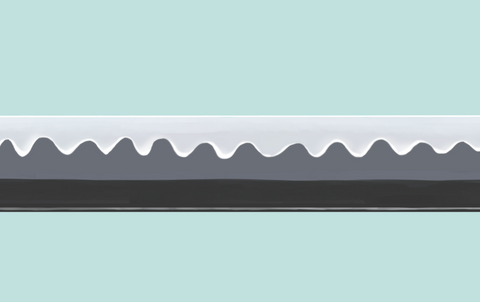Gunome in Japanese Katana terminology
互の目 (Gunome)
What is Gunome in Japanese Katana terminology?
Gunome is a type of blade pattern (Hamon) in Japanese swords. It is characterized by a regular, rounded pattern that resembles a series of round Go stones. The name ""互の目"" (Gunome) comes from its resemblance to the pattern of woven bamboo, which is called ""互の目"" (Gunome) in Japanese.
There are various types of ""互の目"" (Gunome), including ""数珠刃"" (Juzuba) and ""瓢箪刃"" (Hyotanba).
""数珠刃"" (Juzuba) is a type of ""互の目"" (Gunome) where the 'heads' of the 'nails' (choji) are aligned in a 'checkerboard' (gunome) style, and among these, it refers to those where the 'heads' of the 'nails' are particularly aligned, resembling the beads of a rosary (Juzu in Japanese).
""瓢箪刃"" (Hyotanba) is another type of ""互の目"" (Gunome) where two 'nails' of different sizes are alternately arranged, resembling the cross-section of a gourd (Hyotan in Japanese). This pattern is often seen in swords from the Kamakura period.







